Land is Life
Words by Nicola Sebastian
Photographs by Jacob Maentz
BEFORE “I”, LAND
The love of one’s land begins when there are no words to shape its expression; no ideas to map what it can and can’t be. It is open-wide, enveloping, and unexplained: colours and sounds and feelings deeper for their darkness; vaster for their emptiness. Our relationship with land begins and ends with life itself, and whether we loftily reach for the universal in the abstract sense of “existence” or casually chalk our memories and impressions down to “experience,” no words or ideas, nor even our actions, can separate us from the fabric and flow of space and time. To be is to already belong. To live is to have landed—here, now, in the midst of everything else.
This atomic truth is known to the majority of modern humans, in theory, that is, in thought. We may even recognize this as “important,” even “urgent,” but there are those of us whose lives are so shaped by this primordial experience that they have institutionalized it in their culture, designed their days around it. To them, to have a relationship with the land is simply “normal”—there is nothing outside of it. For lack of a better word, or perhaps for lack of a greater awareness, we call them indigenous.
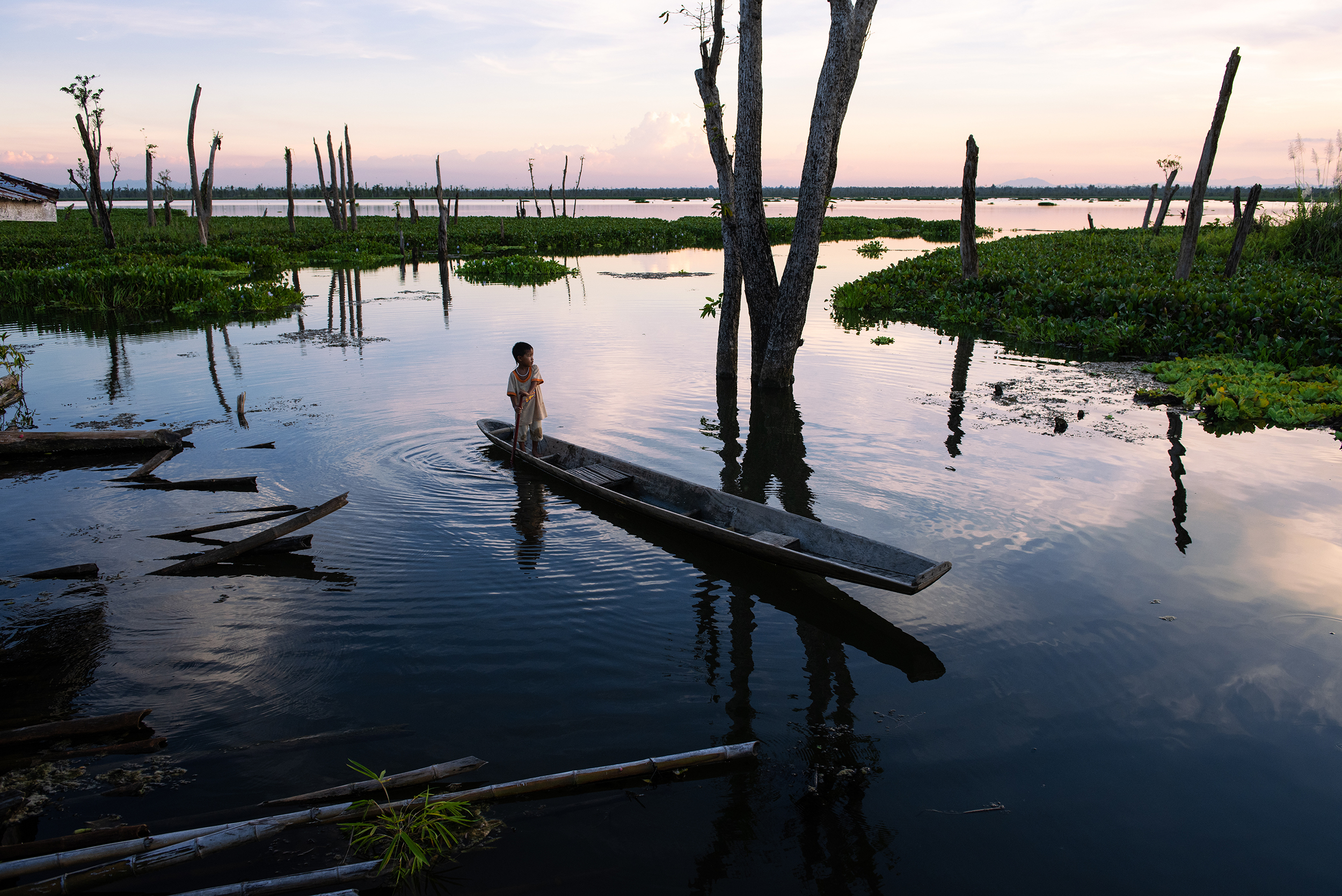
Listen, as a Kankanaey Sagadian speaks to us of his homeland: “I come from where the mountains and skies meet. My hometown of Sagada is 4800 feet above sea level, in the Cordillera mountains of Northern Philippines. Every morning I wake up to an escalating sea of clouds.”
“I was born in a limestone valley full of caves and subterranean rivers. Enter my hometown and you will be welcomed by limestone rocks: these are the dwelling places of our ancestors. The caves of these rocks serve as our traditional burial grounds, and in the mouths of these caves, you can see stacks upon stacks of coffins. Irrigated stonewall terraces, where we grow our rice, frame the valley, and, along with the caves, our town is surrounded by pine forests and waterfalls. When I was young, my grandmother told me that portions of these forests are inhabited by spirits.”
“These are the spaces and sights that any Kankanaey Sagadian is exposed to, every day. It may sound merely poetic, but it is the nature that speaks to us.” To say that land and life belong to each other is as literal and tangible as we can get without simply falling silent, and returning to our breath. Perhaps if we knew what those we call indigenous know, in the way that they know it, we would find the faith we yearn for in the very ground beneath our feet, rising up to meet us with even, equal force.
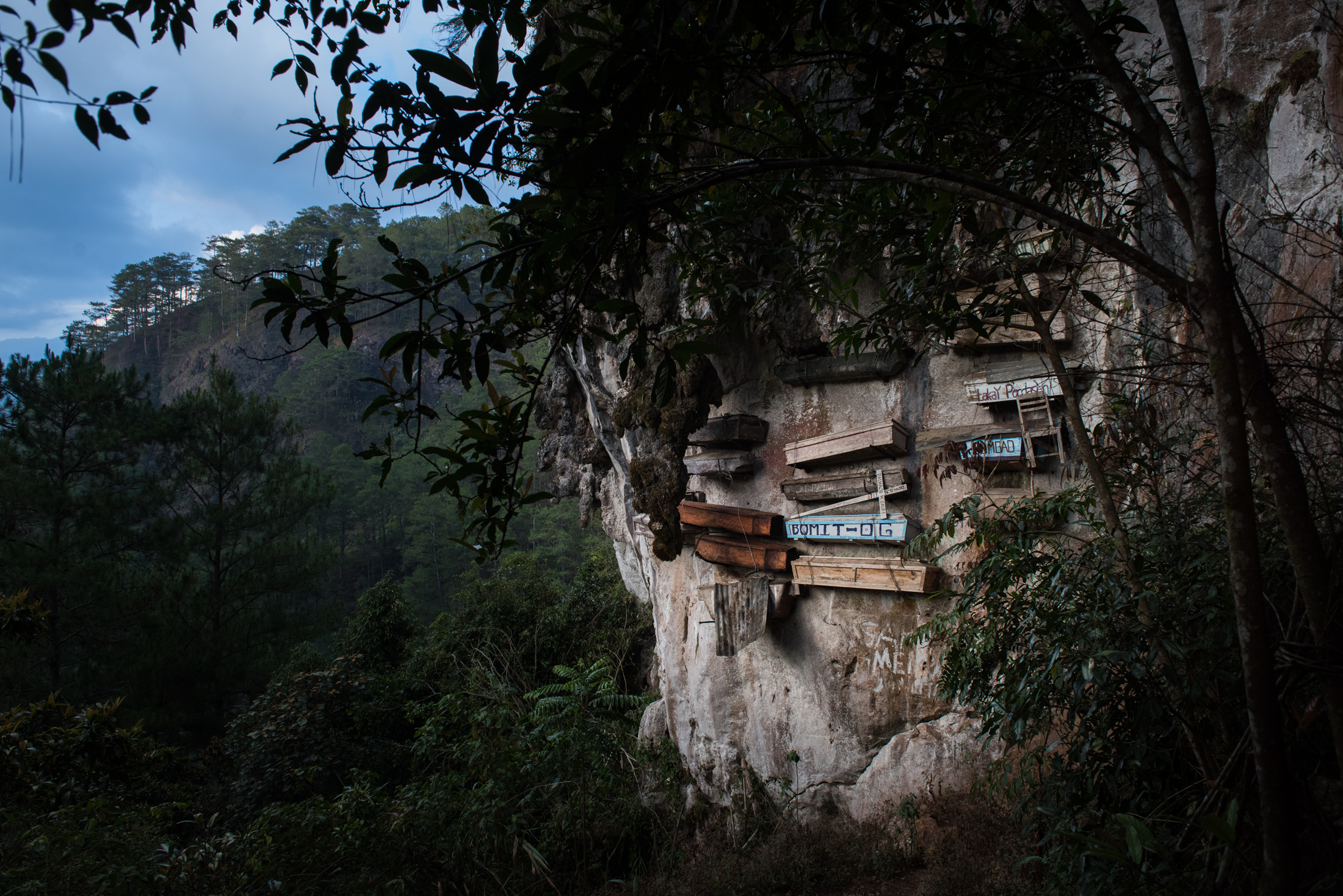
ANOTHER WAY OF KNOWING
Kiling! Kiling! says the little bid with the blood-red throat, and so tells its name to the Kankanaey over and over. “After many years of listening to the kiling bird, our ancestors determined that the sound of its call signifies that the planting season should begin.”
The Kankanaey Sagadian who imagines his hometown of Sagada for us is Giovanni Reyes, also the president of the Philippines ICCA Consortium, a group that advocates for the recognition of the rights of indigenous communities over their own homelands. “The mainstream schools in Sagada did not teach us what this landscape is all about,” he continues, “this was taught to us by our ancestors. They observed the rock formations, the changing weather, the flowering of certain plants, the behavior of certain animals: the timing of their appearances, the howling of the dogs, the diversity of bird sounds. And from these signs they interpreted a natural cycle, around which they scheduled our agricultural activities.”
The kiling is also called the Siberian Rubythroat, a migratory bird that passes through the island of Luzon as it flies south for the winter and north again for the spring, along with nearly five hundred other species of birds in the migratory route known as the East Asian-Australasian Flyway. As it turns out, the bird’s arrival coincides with that of Amihan, the northeastern monsoon, which means that there will be enough water in the rivers to irrigate the Kankanaey’s rain-fed rice paddies.
“Through the generations,” Giovanni continues, “the observations of our elders evolved into a system of practices and rules, embedded in what we call tradition. There is a certain time structure built into certain spaces: a time for planting, for harvest, for hunting, for fishing. And it’s not just about farming rice. There are spaces designated only for spirits: members of our community do not go into certain portions of the forests for fear of encountering malevolent spirits—maybe as malevolent as this virus called COVID-19, which infiltrated the center of the White House. Yet we also have rituals to give thanks to these spirits who dwell in the rivers and forests, and of course to the living creatures all around. Whether you believe it or not, this is how our ancestors explained it.”
What Giovanni describes is a form of governance encoded in his community’s very experience of the world—a cosmic vision both sacred and mundane. “This is where nature and culture actually meet…Our customary law is not a state law. It isn’t legislated in the local government halls. The government will never understand what it is all about, unless we count money.” This is why he spends his days translating this indigenous sense of the world to international organizations such as the United Nations and the World Bank, because we cannot respect what we do not understand.
Is the cycle itself random or by design? Perhaps synchronicity is not so much the patterns projected by the subconscious, but rather those that are discovered by sustained attention. The American missionary and historian William Henry Scott observed that the people of the Mountain Province mark the passage of time not with numbers, but with seasons; every orbit of the moon is named for activities both human and natural. “The oldtime Igorot doesn’t even know how many days there are in a month…The question, “What is a year?” put to an old Igorot one harvest time brought the cryptic reply, “Now.”1

PRESENCE RATHER THAN PROTECTION
Conservation, as the developed world practices it, means to border off swathes of land and protect it from ordinary human activity. But the very places that the government seeks to conserve are where our indigenous communities already live. The Philippine government did a decade-long study to identify the country’s key biodiversity areas, that is, areas, typically watersheds with good forest cover, that sustain the majority of the Philippines’s flora and fauna, and thus should be protected from deforestation and exploitation—and it so happens that around 75 percent of the 128 key biodiversity areas that they identified and put under government protection fall within historic indigenous territories. Such government-protected areas usually restrict or outright prohibit indigenous communities from their traditional use of the land. However, studies, including one funded by none other than the World Bank—the very global institution that spends millions of dollars on creating protected areas—have repeatedly come to the same conclusion: that lands occupied by indigenous communities have higher biodiversity levels and lower levels of deforestation than those managed by national governments.²
“Actually, indigenous people have no concept of conservation,” Giovanni explains, “because it’s interwoven into the daily fabric of our life. Because of the information that the birds and animals provide to the community, we have to protect their habitat, the forests where they dwell. This is not only true in the north. In Mindanao, for example, when the Philippine Eagle makes an unusual sound, this means that there is an oncoming threat, either in a form of a storm or in the form of tribal war. And so the Ovu Manobos consider the eagle as a community stakeholder and partner. It’s not because of government-protected areas that these birds and these Eagles persist. It’s because of this kind of relationship that I just described.” In direct contrast to the geographically defined boundaries and legal regulations of the government-protected-area system, the indigenous form of stewardship is more organic, emerging out of the simple yet unquantifiable factors of presence and attention.
As gradually as a forest regrows after a fire, Western institutions are learning to recognize indigenous environmental systems as valid forms of science and governance: the former they label as Traditional Ecological Knowledge (TEK), or alternatively as an Indigenous Knowledge System and Practice (IKSP), and for the latter they use the term, Indigenous Peoples’ and Community Conserved Territories (ICCAs) or more simply, Territories of Life. An example of TEK would be the communal forest management of the Kankanaey of Besao, or the iBesao. The Kankanaey identify two kinds of forests: pagpag, a mossy forest in which the entire community can forage, and the batangan, a pine forest that is usually clan-owned, where any member of the clan can get timber, so long as they replace the trees they cut down. Instead of clearing these forests for rice cultivation, the iBesao maintain their growth, oftentimes above the rice paddies themselves, because they understand the importance of forests to their own water supply. To translate, they have developed their own scientific concepts of the watershed and the water cycle.

TEK also challenges many popularly-held beliefs in Western conservation, such as the denouncement of kaingin or swidden farming, where parts of the forest are routinely cleared with fire and cultivated with crops, as environmentally destructive. As many indigenous communities traditionally practiced it, swidden farming (locally and negatively known as “slash-and-burn”) was actually sustainable, because only certain areas of the forest would be farmed, and it was done in small portions and in rotations to allow regrowth. The controlled fires also helped to clear the undergrowth and rejuvenate the forest. Because it was in the interest of the country’s former colonial government to frame indigenous knowledge as “backward,” thus elevating the position of their own “modern science,” the idea that kaingin is destructive was perpetuated as a myth, even after the Philippines was given its independence.³
Furthermore, the main cause of deforestation in the Philippines before 1982 was never small-scale swidden agriculture, but rather unchecked commercial logging. “The remaining forests in the Philippines, a total of six million hectares according to the DENR—down from 21 million at the turn of the 20th century because of rapid extraction from the 1940s to the 80s—are found in the ancestral lands of indigenous peoples. All of the built-in controls I spoke of—the concept of time and the concept of danger—have prevented overexploitation on these sites. And it has resulted in what the outside world now refers to as conservation.”
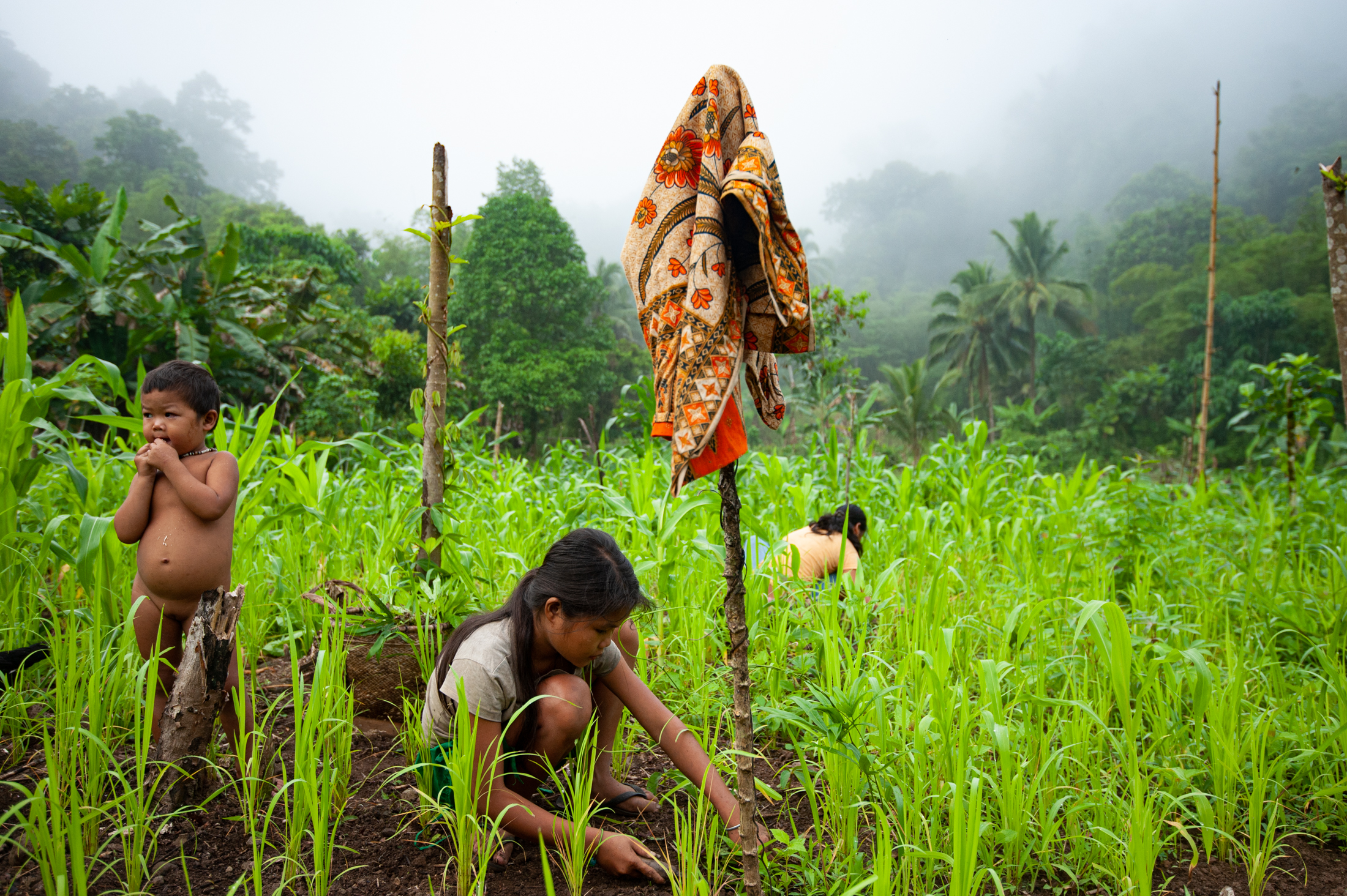
The impact of indigenous communities on the rest of society is direct and measurable. A study published by the University of the Philippines in Baguio has determined that 20 million Filipinos living in the lowlands of Luzon are the direct beneficiaries of the ecological services provided by the ICCAs in proximity to their communities. Giovanni explains that these material services include the water supply needed to irrigate thousands of hectares of farmlands, clean air, soil formation, and protection from flooding and climate disasters, and of course our country’s global contribution to carbon sequestration from photosynthesis.
“Just think of the entire planetary landscape: if you multiply the indigenous peoples practices in Sagada by 100,000 fold, you’ll probably start to understand the reason why up to 80 percent of the planet’s biodiversity is located within indigenous people territories.” The statistic is especially startling because indigenous communities only occupy 22 percent of the planet’s land surface.
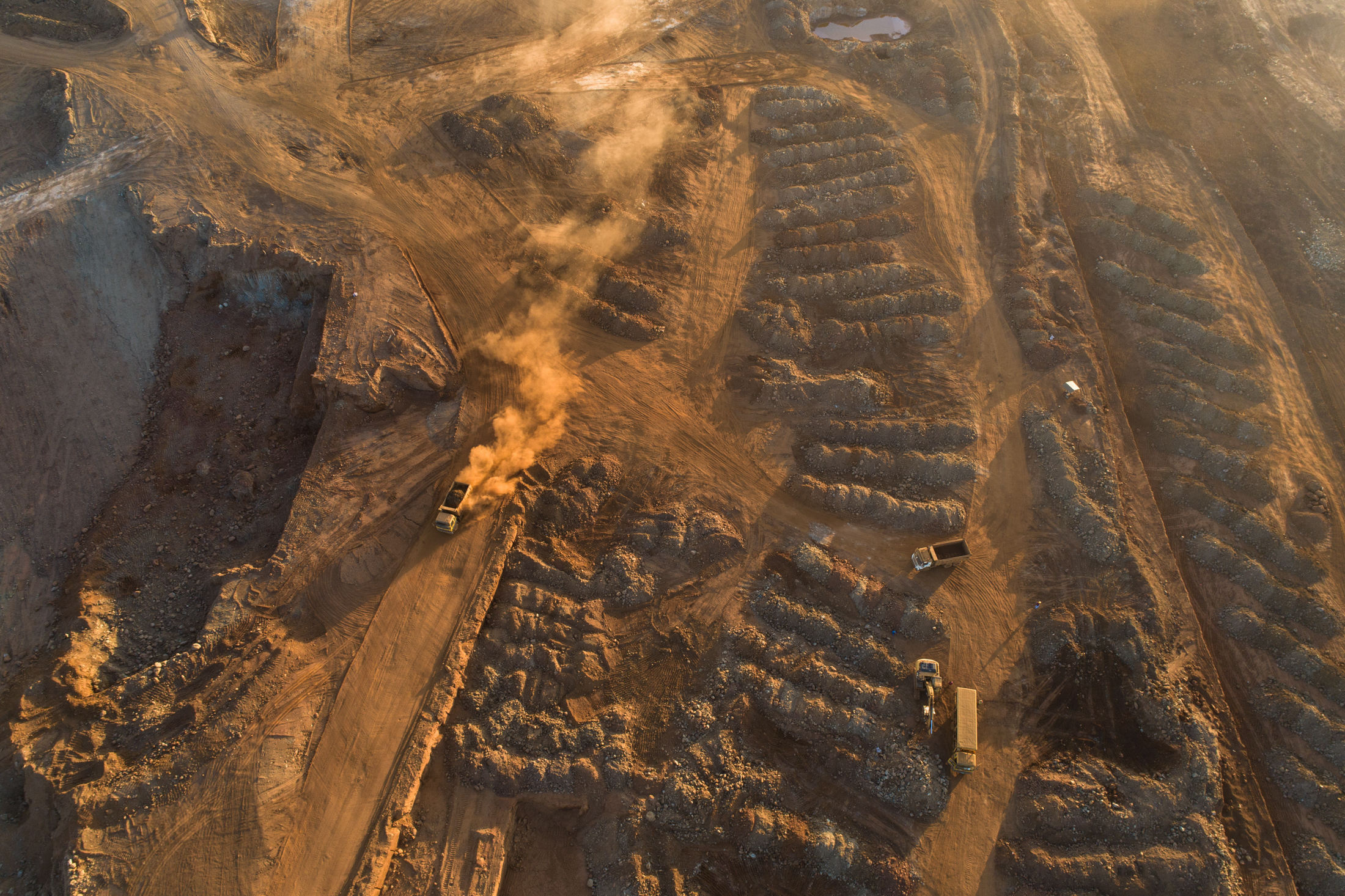
DEVELOPMENT FOR WHOM?
The very resources that sustain indigenous life also endanger it. “If you look at the territories of indigenous peoples (the ICCAs), they are not only marked out with government-protected areas; they are covered in mining claims and other development projects,” says Giovanni. Historically, this overlap in interests has resulted in conflict much more than cooperation.
With proven consistency, the actions done in the name of economic growth take away indigenous forms of livelihood, if not outright forcing them out of their homelands. “Large-scale dams may produce so-and-so amount of megawatts to power the country, but they flood our lands and destroy our centuries-old rice terraces, which for us is the dust of our forefathers. This is why we will always say no to this kind of development project, because it destroys our sacred sites—just as a Catholic or a Protestant would say, ‘Do not destroy that church, because that is where we worship.’”
Often, these development projects offer conservation measures, but Giovanni argues that the framework itself is wrong from the start. “Conservation is not synonymous with mitigation,” he continues. “Mitigation means to lessen the impact of certain projects: say, when a mining company enters an area, there’s a token portion of the project that says, ‘Let’s plant tree seedlings to mitigate the impact of soil erosion due to mining, and the poisoning of the rivers from the chemicals used to extract these minerals. As long as we think of conservation as a mitigation measure, the plunder will continue, because there’s a means to mitigate it.”
It comes down, in the end, to a fundamental difference in values. And yet, more than anything, this clash highlights mainstream society’s misunderstanding of the land itself, and our place in it. “Sometimes we are asked, ‘How on earth do you claim a watershed when you are so far away from it?’ For us, the subterranean rivers are sacred, which means we have to protect the source of water itself, far, far away from the caves. Meanwhile, government officials claim that the watershed is government property, and insist that we only own what we occupy, even if the entire landscape is interconnected.”
Just as surely as the kiling bird arrives with the life-giving monsoon, and as indigenous beliefs ensure proper stewardship, mainstream society cannot help but measure the ecology of indigenous lands according to the economic doctrine of development. “Ultimately, conventional economic growth is always synonymous with resource extraction of IP communities,” insists Giovanni. “Instead of improving our lives, it destroys our communities. To be destroyed by a powerful energy such as a typhoon, that we can understand. But to be destroyed by our fellow humans, that’s unacceptable…And so, when resource extraction is justified with the notion of national development, the question has to be, development for whom? Why are our lands being used as a resource base?”
Giovanni asks another uncomfortable question: “What happens to your rice lands if we allow a mining company to destroy the watershed, the source of the water? We will be dispossessed of our lands, yes, but you people in the lowlands will have no water also.”

THE ENVIRONMENTAL FRONTLINE
If land and life are inextricably interwoven in the indigenous sense of self, to fight for one’s land is to fight for one’s very life. When indigenous communities resist the encroachment upon and the exploitation of their homelands, they aren’t insisting that they be able to do whatever they like; they are protecting their livelihood and their identity as a people. They are insisting that their culture, their way of life, their community, matters. And for as long as the government fails to recognize the indigenous relationship with the land, this clash in values will continue to result in the destruction of the important environmental resources, and the endangerment and death of the indigenous communities that steward and safeguard them.
“To resist these kinds of projects puts indigenous people at risk. We don’t even have to read the books of Mao or Lenin to be labelled a communist or a rebel.” What Giovanni describes is known in the Philippines as red-tagging, the government strategy of labelling activists as communists and insurgents without substantiating evidence, which has the dangerous effect of justifying their extrajudicial murder.
Lawyers, professors, human rights groups, and no less than a Supreme Court Justice have denounced the Anti-Terror Law that President Duterte passed in 2020 as de-facto Martial Law, because it allows for an extrajudicial council to suspect anyone as an insurgent or terrorist, have them arrested without a warrant, and detained for up to 24 days.” The law is certainly a threat to the very idea of a Philippine democracy, but even more urgent is how it specifically targets indigenous communities and their advocates, putting them in danger every day.
It’s no accident that the Philippines is the deadliest country in the world for land and environmental defenders. In 2019 alone, according to Kalikasan People’s Network for the Environment (Kalikasan PNE), 46 environmental front-liners were killed; in that year’s most notorious incident, a forest ranger by the name of Bienvinido Veguilla Jr. was hacked to death in Palawan, allegedly by illegal loggers.
This is the very reason indigenous people like Giovanni Reyes become international spokespersons for their own communities. When he was invited to speak at the United Nations Council for Human Rights in Geneva, he delivered this same message: if conservation is meaningless without the indigenous communities, these indigenous communities must be given the right to self-determination.
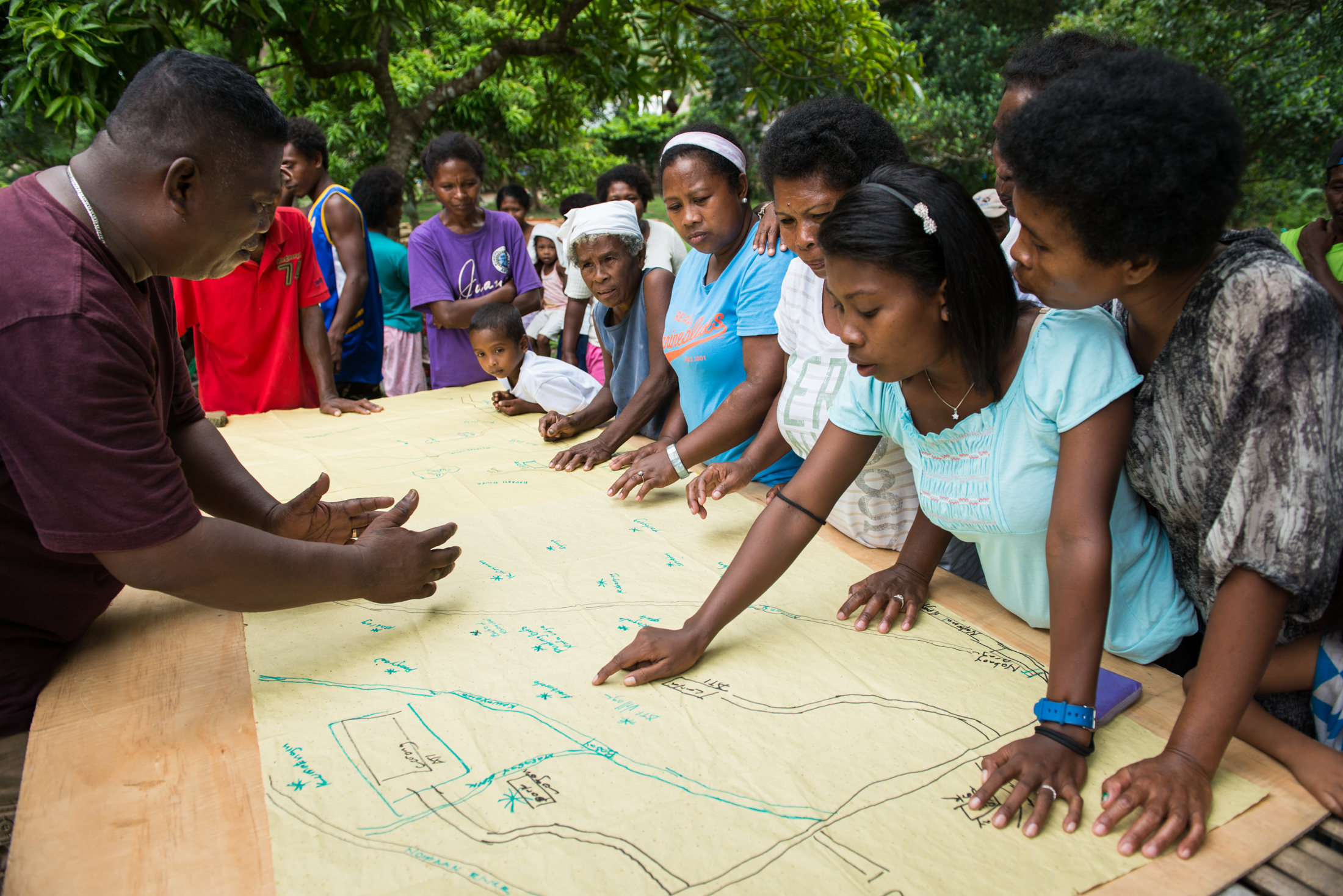
“The UN has been talking about the Sustainable Development Goals, but if you build these programs outside of the indigenous framework, which is as I mentioned already helping the world achieve these very goals, in the future you may pass on a forest without trees, rivers without water, and protected areas without biodiversity. The world needs to stop looking at us as a community within a landscape, and start looking at us as a community that is itself a landscape.” Just as the landscape speaks to the indigenous, the indigenous speak for the landscape.
In order to make a more accurate accounting, we need to update our system of measurement; to think of society less as an economy, and more as an ecology. And as we learn to shift our gaze, the margins to which indigenous communities that have historically been relegated quickly become the center. They are our environmental frontliners—not just for the Philippines, but for the entire world.
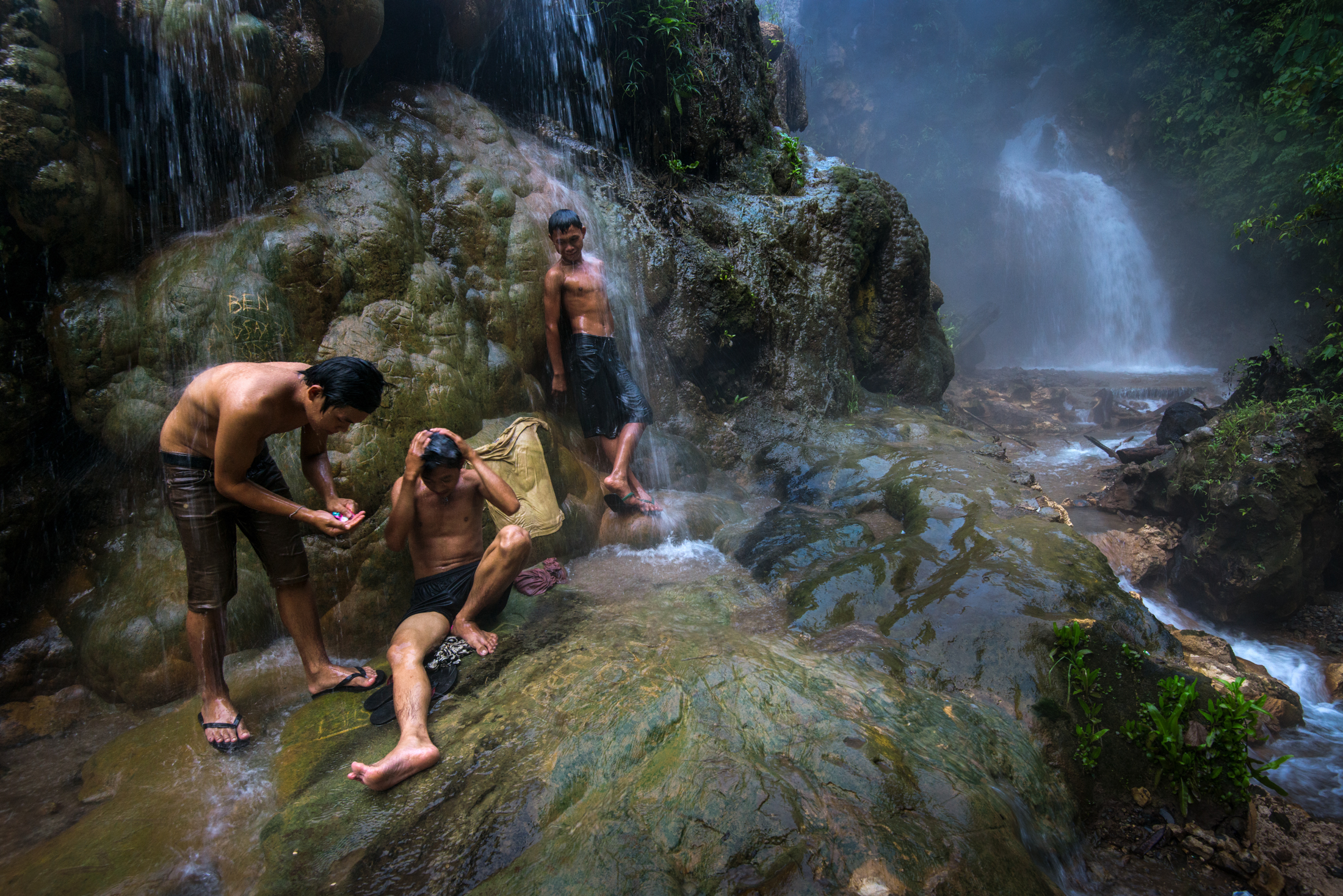
─
Homelands: The Book
This essay is part of a longer narrative that is published in a photography book, Homelands: Indigenous Life in a Changing Philippine Landscape. What unfolds in this book is the photographic narrative of Jacob Maentz’s close and continuing collaboration with various indigenous and national minority communities in the Philippines. In close collaboration with writer Nicola Sebastian, this book further reflects on indigeneity as cultural identity, as rallying banner, and as multitudinous question. The text explores even as it introduces the diverse concerns of indigenous communities: the importance of solidarity in the clash between self-interest and shared interests; the submerged history of political resistance; alternative education and traditional knowledge systems; food sovereignty; the idea of indigenous peoples as environmental frontliners leading the race against irreversible ecological devastation; and the successes and challenges of reclaiming land recognition after centuries of colonization and modern development aggression.
Recommend
published by
This essay was produced with the help of the homelands.ph editorial team including Neen Sapalo, Sabrina Anne Gloria and Anna with support from Blue Earth Alliance.

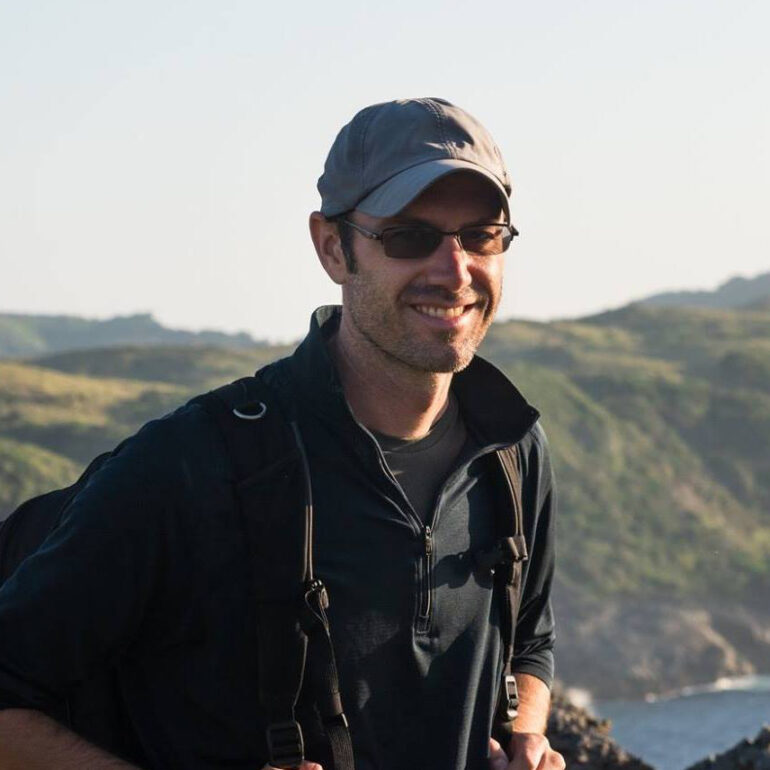
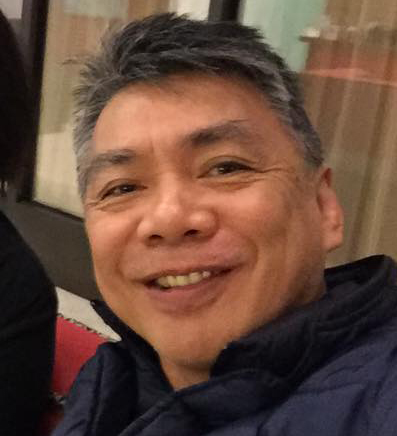
1. William Henry Scott. 1958. “Some Calendars of Northern Luzon.” American Anthropologist 60: 564-565.
2. L. Porter-Bolland et al. 2011. “Community managed forests and forest protected areas: An assessment of their conservation effectiveness across the tropics”. Forest Ecology and Management 268: 6-17
3. Bao Maohong 2008. Senlin yu fazhan: Feilübinsenlin lanfa yanjiu (1946-1995) fcM.: [1946-1995]) [Forest and development: Deforestation in the Philippines, 1946-1995]. Beijing: China Environmental Science Press.